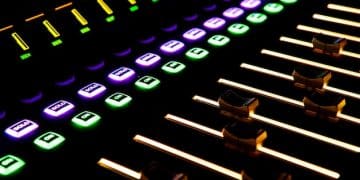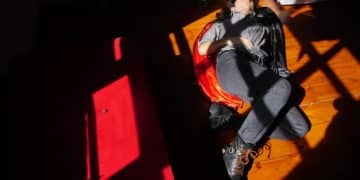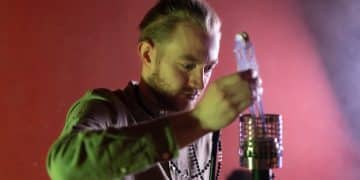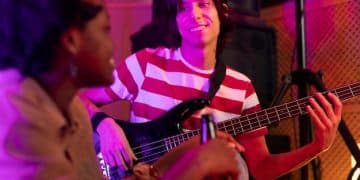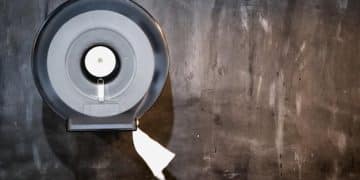Sample Clearance 101: Your Guide to Legal Music Production
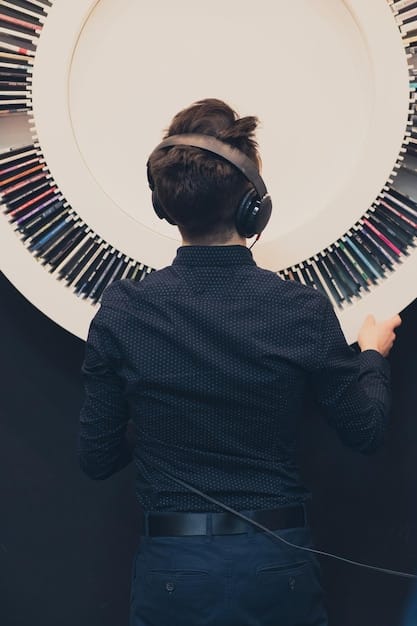
Sample clearance is the process of obtaining permission to use copyrighted material, such as a musical recording, in a new piece of music, ensuring legal compliance and avoiding potential copyright infringement issues.
Navigating the world of music production requires not only creativity but also a solid understanding of legal considerations. One of the most crucial aspects is sample clearance. This process ensures that you’re legally using copyrighted material in your music, protecting you from potential lawsuits and hefty fines.
Understanding Sample Clearance
Sample clearance can seem daunting, but it’s a necessary step for any musician incorporating existing recordings into their work. This section will break down the basics, explaining what it is, why it’s important, and when you need to go through the clearance process.
Failing to clear your samples can have severe consequences, so understanding the process upfront will save you time, money, and potential legal headaches in the long run.
What is Sample Clearance?
Sample clearance is the process of obtaining permission from the copyright holders of a musical recording (the master recording) and the underlying composition (the song) before using a portion of that recording in a new piece of music. This involves identifying the rights holders, contacting them, and negotiating a licensing agreement.
Why is Sample Clearance Important?
Copyright law protects the rights of creators, and using a sample without permission is a direct violation of these rights. Avoiding legal action is the most obvious reason, but also, properly clearing your samples helps build credibility and foster positive relationships within the music industry. It also allows the original artist to gain recognition (and compensation) for their work.
- Avoiding Copyright Infringement: Using samples without permission can lead to lawsuits and significant financial penalties.
- Protecting Your Own Work: If your song is built upon uncleared samples, it could be blocked from distribution.
- Building Good Relationships: Clearing samples shows respect for other artists and copyright holders, fostering a positive environment.
In conclusion, understanding sample clearance is important to make your productions seamless.

Identifying Copyright Holders
The first step in the sample clearance process is identifying and locating the copyright holders. While it might seem straightforward, it can often be complex, especially for older or less mainstream recordings. Knowing where to look and what to look for can significantly streamline the process.
Without knowing the copyright holders, it’s impossible to obtain the necessary permissions, so this research stage is paramount for legal and ethical music production. Let’s explore where to find the rights owners of both the composition and the master recording.
The Composition Copyright
The composition copyright protects the underlying musical notes and lyrics of a song. Rights are typically held by the songwriter(s) and their music publisher(s).
The Master Recording Copyright
The master recording copyright protects the specific recorded version of the song. Rights are typically held by the recording artist(s) and their record label(s).
- Performing Rights Organizations (PROs): Organizations like ASCAP, BMI, and SESAC in the US track public performances of songs and may list publisher information.
- Copyright Office Records: The US Copyright Office has records of registered copyrights, which can provide detailed information on copyright ownership.
- Record Label Websites: Major and independent record labels often have contact information and licensing departments listed on their websites.
- Online Databases: Websites like Discogs and AllMusic can provide information on recordings and associated artists and labels.
Correct identification of rights owners, by clearing sample clearance, is vital to starting the clearance process.
Contacting Rights Holders and Negotiating Licenses
Once you’ve identified the copyright holders, the next step is to reach out and negotiate a licensing agreement. This involves sending a formal request, providing details about your intended use of the sample, and agreeing on a fee or royalty structure. This part may take time, but can be very important for your music career.
Remember, clear communication and a professional approach can go a long way in securing the necessary permissions. Let’s explore the different ways to negotiate licenses.
Crafting a Clearance Request
A clearance request should be clear and concise, providing all the necessary information for the copyright holder to assess your request. Include song title, length and where the sample will be used in your project.
Negotiating License Terms
The terms of the licensing agreement will vary depending on the popularity of the original recording, the extent of the sample used, and the potential commercial success of your new work. Common terms include:
You will need to negotiate the terms in a way that both the new song/project and the old song owners see as profitable/beneficial. You must know your worth.
- Advance: An upfront payment to the copyright holder.
- Royalty: A percentage of the revenue generated by your song.
- Ownership: A percentage of ownership split between you and the copyright holder.

Being professional and having a well thought out plan for your clearance is super important!
Understanding Different Types of Licenses
Navigating sample clearance also requires understanding the different types of licenses available. The type of license you need depends on how you plan to use the sample and the rights you need to secure. Knowing these differences will help you negotiate effectively and ensure you’re covered for all intended uses.
There are several types of licenses that may pertain to your specific clearance needs. Be sure and communicate with the copy right owners to make sure you are getting the correct one for your project.
Master Use License
This license grants you the right to use a specific recording of a song. You obtain it from the copyright holder of the master recording, typically the record label or the artist themselves.
Synchronization License
This license is needed if you plan to use the sample in a video or other visual media, such as a film, TV show, or video game. It grants you the right to synchronize the music with the visual elements.
Print License
This license is required if you intend to reproduce the lyrics or musical notation of the sampled song in print form, such as in sheet music or lyric booklets.
If you are unsure, it’s always best to seek professional help!
Legal Consequences of Unauthorized Sampling
Using samples without proper sample clearance can lead to serious legal consequences. Copyright infringement lawsuits can be costly, damage your reputation, and even prevent you from releasing your music. Understanding these risks is crucial for safeguarding your work and career.
The risk is always worth checking and making sure to avoid issues down the road that can really put a damper on your career. Let’s have a look at some potential risks involved in not taking the proper steps.
Copyright Infringement Lawsuits
Copyright holders can sue you for copyright infringement if you use their material without permission. These lawsuits can result in significant financial penalties, including damages for lost profits and legal fees.
Cease and Desist Orders
If a copyright holder discovers unauthorized use of their music, they may issue a cease and desist order, demanding that you immediately stop using the sample and remove any infringing material from distribution.
Blocking Distribution
Digital distribution platforms like Spotify, Apple Music, and YouTube have automated systems to detect copyright infringement. If your song contains uncleared samples, it could be blocked from distribution or removed from these platforms.
Don’t put yourself behind the 8 ball!
Best Practices for Sample Clearance
To navigate the sample clearance process smoothly and avoid potential legal issues, it’s essential to follow best practices. These include maintaining detailed records, seeking legal advice when needed, and being proactive in obtaining permissions.
As with any legal process, the more prepared you are, the more efficient the process will be! Let’s explore these best practices.
Maintain Detailed Records
Keep accurate records of all the samples you use, including the titles of the songs, the names of the artists, and the contact information of the copyright holders. This will make it easier to obtain clearance and respond to any inquiries.
Seek Legal Advice
If you’re unsure about any aspect of the sample clearance process, consult with an entertainment attorney who specializes in music copyright law. They can provide guidance on negotiating licenses and protecting your rights.
Be Proactive
Don’t wait until the last minute to clear your samples. Start the clearance process early in the production process to avoid delays and potential legal issues down the road.
Being proactive can make all the difference.
| Key Point | Brief Description |
|---|---|
| 🔑 Importance of Clearance | Avoid legal issues and protect your music career by always clearing samples. |
| 🔎 Identifying Rights Holders | Research and find the correct copyright owners before using any samples. |
| 📜 Types of Licenses | Understand master use, synchronization, and print licenses to use samples legally. |
| ⚖️ Legal Consequences | Be aware of potential lawsuits and distribution blocks if you don’t clear samples. |
FAQ
▼
A sample is a portion of an existing sound recording used in a new musical work. It can be a snippet of a song, a drum beat, or any recorded sound.
▼
You can check PRO databases like ASCAP, BMI, and SESAC, or search the U.S. Copyright Office records. Record label websites and online databases like Discogs can also provide information.
▼
You could face a copyright infringement lawsuit, receive a cease and desist order, or have your song blocked from distribution on digital platforms.
▼
A master use license grants you the right to use a specific recording of a song. It is obtained from the copyright holder of the master recording, typically the record label or the artist.
▼
Yes, it’s always necessary to clear a sample, regardless of its length. Even a short sample can be considered copyright infringement if used without permission.
Conclusion
Navigating the world of sample clearance may seem complex, but it is a necessary step for any responsible musician. By following the guidelines and best practices outlined in this guide, you can protect your music, avoid legal issues, and foster positive relationships within the music community.
